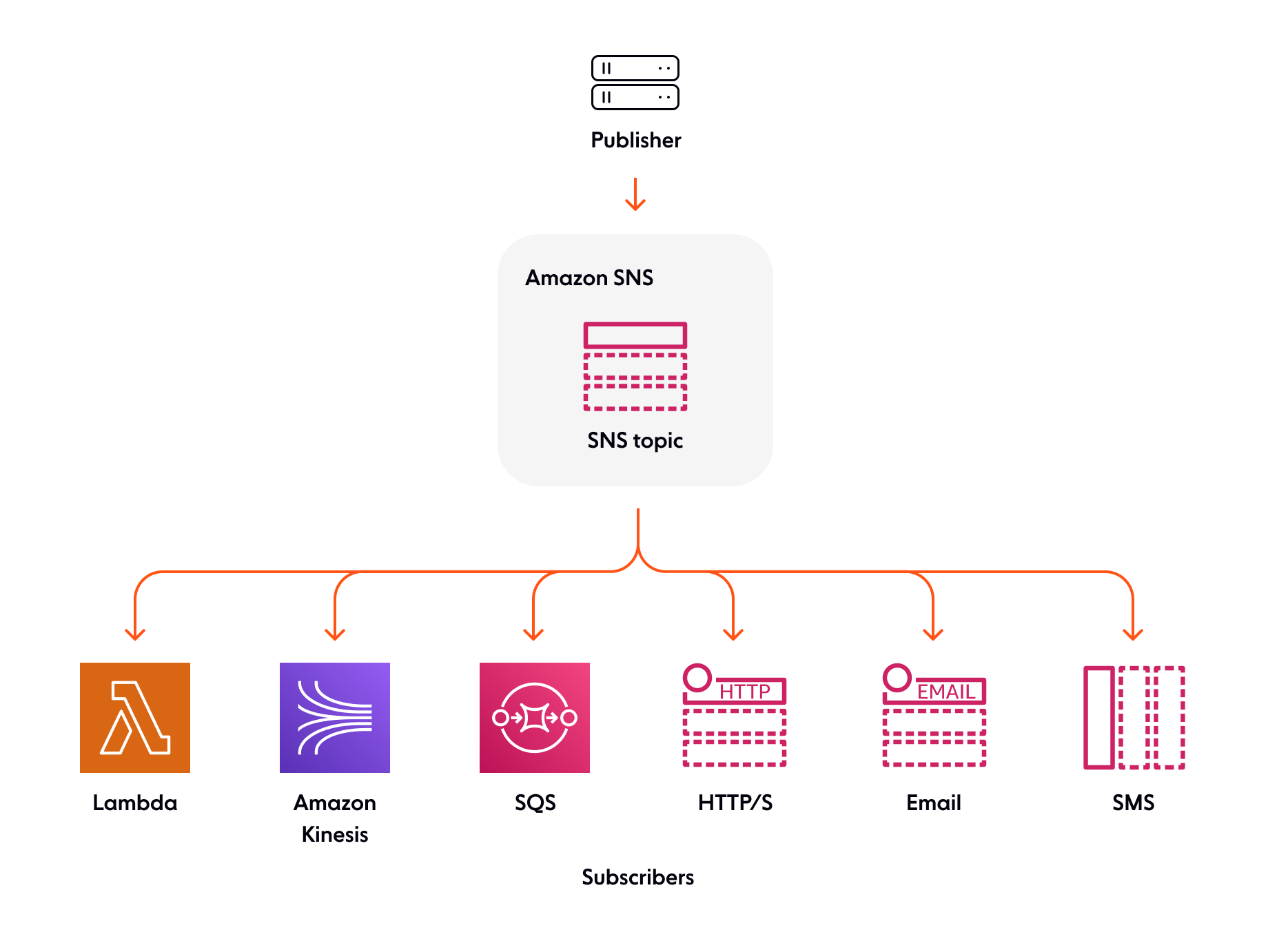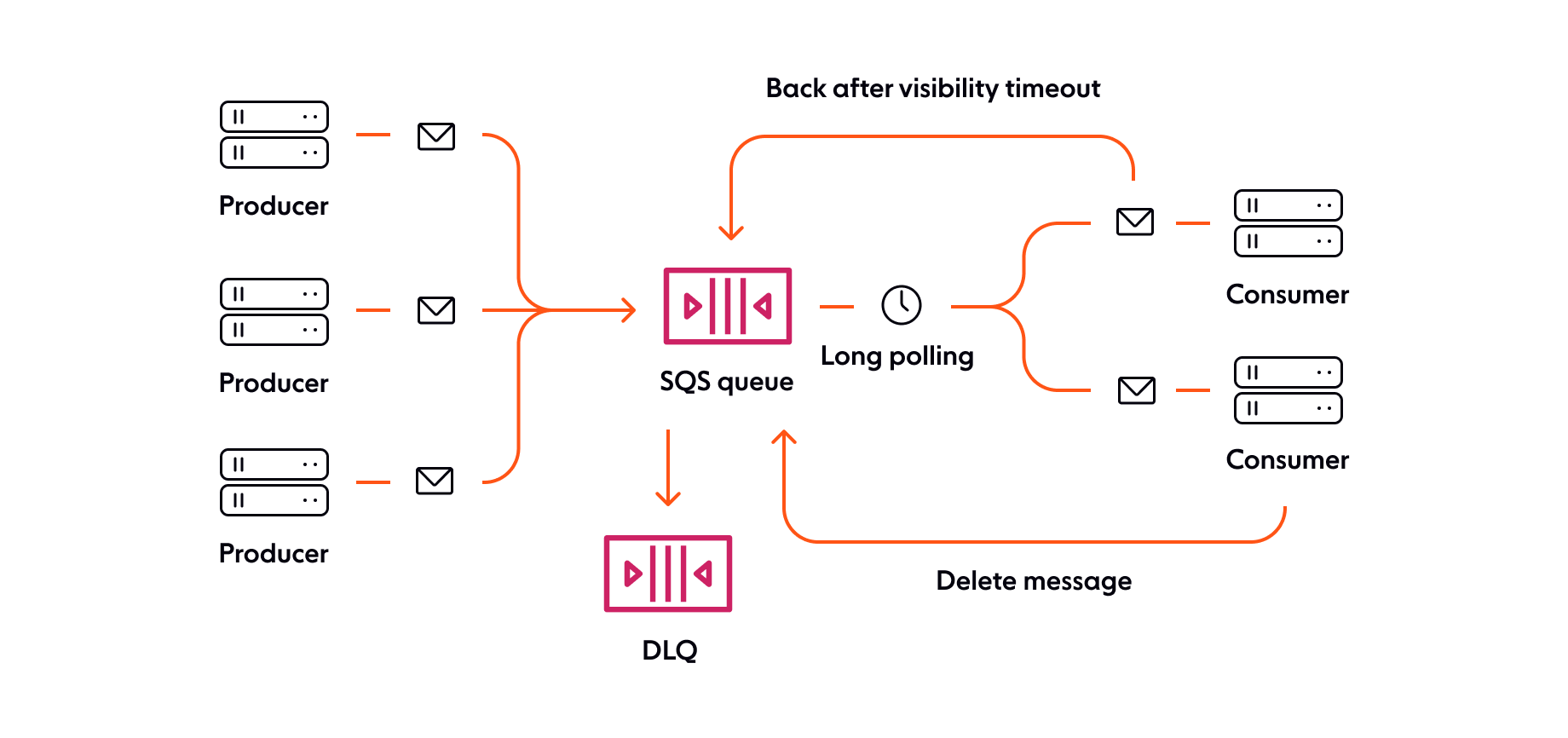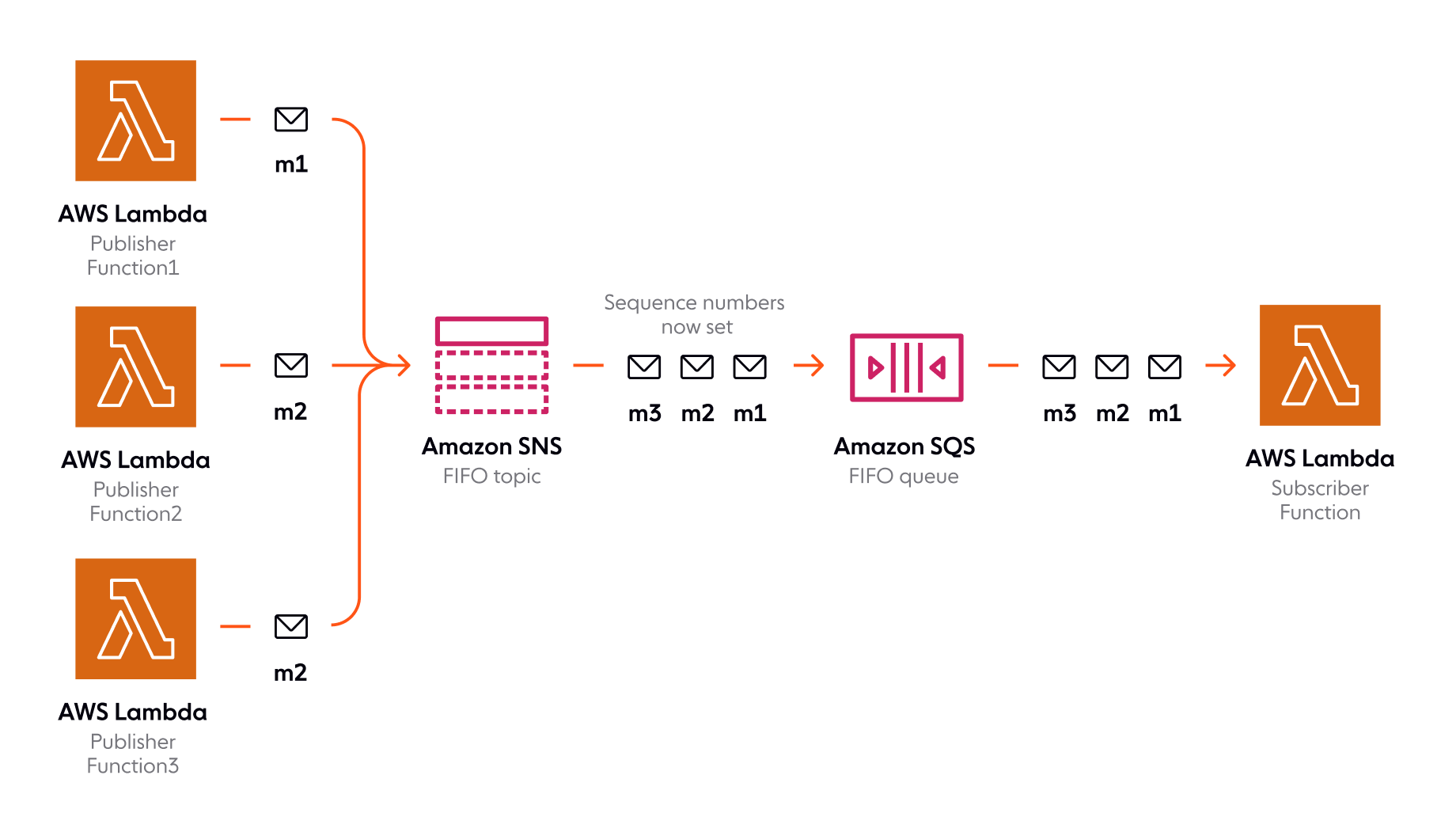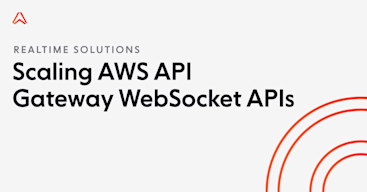- Topics
- /
- Event-driven servers
- /
- AWS SNS vs SQS: Key differences and which one you should use
AWS SNS vs SQS: Key differences and which one you should use
Comparing AWS SNS and SQS
This blog post compares two of the most popular AWS services: Simple Notification Service (SNS) and Simple Queue Service (SQS). We will cover the following:
An introduction to AWS SNS (Simple Notification Service)
As one of the earliest managed services launched on AWS, SNS is a distributed publish/subscribe solution used for application-to-application (A2A) and application-to-person (A2P) communication.
SNS topics are used to enable communication: producers publish messages to topics, and consumers subscribe to these topics to receive messages. You can deliver messages to various types of subscribers, such as AWS SQS queues, AWS Lambda functions, and HTTP endpoints. You can also use SNS to send SMS messages, email, and push notifications to end-user devices.

There are two types of topics:
Standard topics. They offer maximum throughput, best-effort ordering, and best-effort deduplication (messages may be delivered more than once).
FIFO topics. Provide strict ordering and deduplication. The downside is that you can use FIFO topics to send events only to SQS queues (no other type of consumer is supported).
An introduction to AWS SQS (Simple Queue Service)
AWS SQS is a distributed, managed queueing service used for communication between applications, microservices, and distributed systems.
As with most messaging middleware, SQS consists of three major components:
Producers (components that send messages to the queue).
Queue (which stores messages).
Consumers (other components that receive messages from the queue).

There are two types of queues:
Standard queues. They offer maximum throughput, best-effort ordering, and at-least-once delivery.
FIFO queues. Designed to guarantee that messages are processed exactly once, in the same order that they are sent.
What is the difference between AWS SNS and SQS?
We will now look at the main differences between AWS SNS and SQS. We will focus on two main areas: feature differences and use cases.
AWS SNS vs SQS key feature differences
There are some key distinctions between SNS and SQS:
SNS supports A2A and A2P communication, while SQS supports only A2A communication.
SNS is a pub/sub system, while SQS is a queueing system. You'd typically use SNS to send the same message to multiple consumers via topics. In comparison, in most scenarios, each message in an SQS queue is processed by only one consumer.
With SQS, messages are delivered through a long polling (pull) mechanism, while SNS uses a push mechanism to immediately deliver messages to subscribed endpoints.
SNS is typically used for applications that need realtime notifications, while SQS is more suited for message processing use cases.
SNS does not persist messages - it delivers them to subscribers that are present, and then deletes them. In comparison, SQS can persist messages (from 1 minute to 14 days).
When to use AWS SNS vs SQS
Individually, Amazon SQS and SNS are used for different use cases. You can, however, use them together in some scenarios.
When to use AWS SNS
You can use SNS for a variety of purposes, including:
Sending email, SMS, and push notifications to end-users in realtime. Note that you can send push notifications to Apple, Google, Fire OS, and Windows devices.
Broadcasting messages to multiple subscribers (for example, fanning out the same push notifications to all users of your app).
Workflow systems. For example, you can use SNS to pass events between distributed apps, or to update records in various business systems (e.g., inventory changes).
Realtime alerts and monitoring applications.
When to use AWS SQS
SQS is helpful for:
Asynchronous processing workflows.
Processing messages in parallel (by using multiple SQS queues).
Decoupling and scaling microservices, distributed systems, and serverless applications.
Sending, storing, and receiving events with reliable messaging guarantees (ordering & exactly-once processing).
Why use AWS SNS and SQS together?
While both AWS SNS and SQS are useful on their own, they can also be combined to create a more robust and reliable system. For example, by using SNS and SQS together, messages can be delivered to applications that require immediate notification of an event, and also persisted in an SQS queue for other applications to process at a later time.
You can also combine SNS and SQS to ensure end-to-end message ordering. For example, you can have an SNS topic that delivers messages to subscribed SQS FIFO queues in the exact order that the messages are published to the topic. The SQS FIFO queues' consumer(s) receive the messages in the same order they are sent to the queue.

Finally, SQS works nicely with SNS in a fanout pattern, where you want to send identical copies of a message to multiple queues in parallel.
A short conclusion
We hope this article has helped you understand how AWS SNS and SQS are different, their use cases, and how you can use them together.
As we have seen, SQS is a message queuing system that enables you to decouple and scale microservices, distributed systems, and serverless applications.
SNS is a pub/sub system primarily used for application-to-application (A2A) communication. SNS does support application-to-person (A2P) communication as well. Still, there are some limitations: email, SMS and push notifications are the only ways in which messages can reach end-user devices, and you have no guarantees they will be delivered in order or exactly-once.
For more complex A2P use cases (e.g., chat or collaborative editing), and scenarios where reliable messaging guarantees are critical (banking and healthcare, for example), SNS is not a suitable choice; you will have to look at alternative solutions you could use.
About Ably
Ably is a serverless WebSocket platform operating at the edge. We make it easy to deliver low-latency messages to millions of connected devices and build features like live chat, GPS location tracking, realtime push notifications, and document collaboration.
Similar to AWS SNS, we provide pub/sub messaging. Unlike SNS, we offer feature-rich pub/sub APIs, specifically designed to power features for end-users. We offer capabilities such as message history, presence, message delta compression, guaranteed ordering and exactly-once delivery, and many more.
It is worth mentioning that Ably integrates with AWS SQS - our Firehose service makes it easy to stream data from Ably into SQS queues.
Sign up for a free Ably account and see what our platform can do for you
